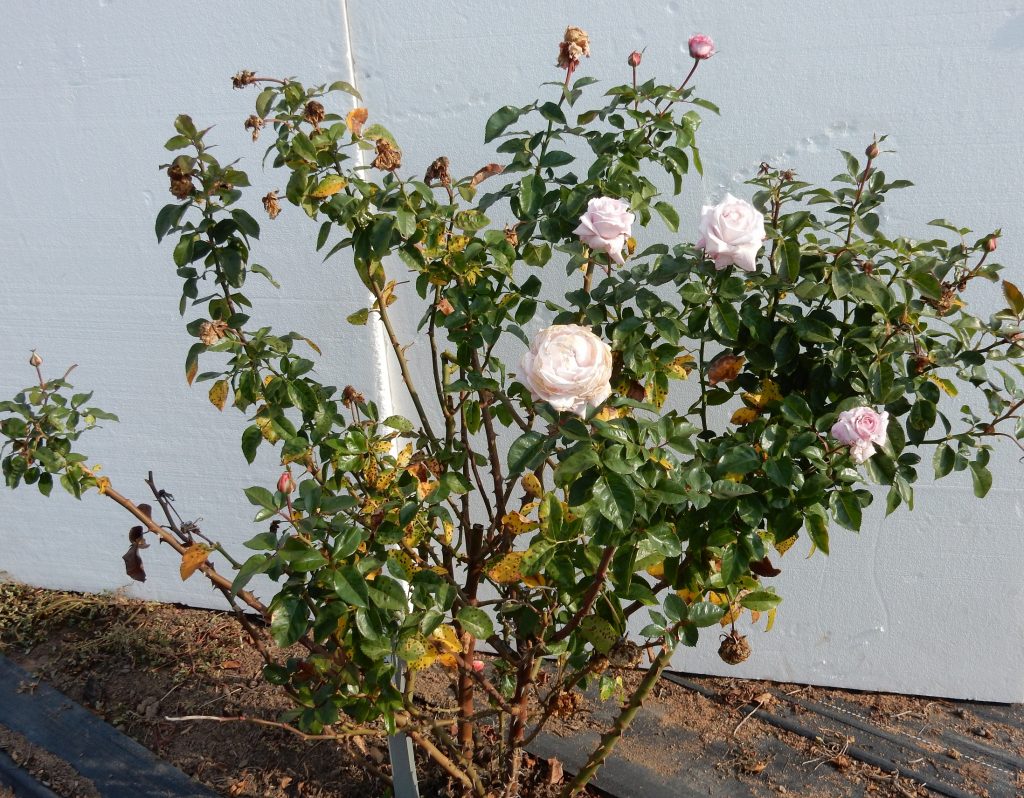Hybrid tea roses, like ‘Una van der Spy’ (above) are still the most popular garden roses because of their elegant, shapely blooms that always look so good in a vase. Rose grower Ludwig Taschner tells us more about the importance of pruning our roses.
For these roses, the general principal is that hard pruning results in fewer, but longer and stronger stems with good quality blooms, while light pruning results in many smaller flowers on shorter stems.
Winter pruning is generally carried out between July 20 and August 5. Taschner is known for saying, ‘you can’t prune wrong’ because the rose always sorts itself out, but you do have a choice when it comes to pruning.
What’s the difference ?
Hard pruning is good for enforcing the rejuvenation of a rose bush and it is also a good idea for roses that are planted close together and need space to grow.
The problem with hard pruning is that if the beds are not composted or well aerated after pruning, and the roses are not regularly watered and fertilised during their growing season, they will struggle. In other words, they need regular care.
Light pruning does not rejuvenate older roses as effectively as hard pruning but it is simple and quick, especially if you don’t feel very confident.
Because more stems remain on the bush, there’s more stored food, which kickstarts growth in spring. The bushes also develop deeper and broader root systems that make them more resilient.
Hard pruning – step by step
Cut off all stems down to hip height, or lower with shorter roses. Using a long-handled lopper, remove dead branches and older main stems, which are blocking or criss-crossing younger stems.
Reduce the number of remaining stems to three or four of the healthiest stems, which should be 20cm apart. Cut these down to about 40 to 50cm above the ground. Cut off any side stems and forked growth.
Good to know: Should you find that you only have one good stem to work with, don’t cut into the hard wood but leave enough green stem that will sprout easily. Pull off all the leaves that are left on the bush.
Before and after pruning


Light pruning – step by step
Cut tall rose bushes uniformly down to 70cm above the ground, medium high rose bushes to 50 cm. Miniature roses can be cut down to 20 cm.
Remove dead branches and older main stems and reduce forked branches back to a single “tine”. Thin side stems are left or they can be cut back to about 20 cm. Pull off all leaves because they can harbour pests and diseases. Lightly pruned rose but with the older woody growth in the centre removed.

Aftercare:
The most important part of pruning is not so much cutting down the rose plants, but the re-generation of the soil. Even perfectly pruned roses will not perform well if the soil is not renewed and if they do not receive water, fertiliser and spraying when required.
Spread a 10cm layer of compost and other organic material over the bed, add rose fertiliser, and dig in everything to a depth of 25cm.
If the soil is compacted, dig in soil conditioning materials like coarse bark compost, peanut shells, compost, pine needles and dry leaves, horse manure, wood shavings, gravel (inorganic), chopped up maize stalks or similar material.

The increased microbial activity in the soil could cause a nitrogen deficiency so it is a good idea to fertilise more generously (twice as much) than normal. Use 60g of Vigorosa per plant or per square metre.
Water well after this job is completed. Thereafter water once a week until the end of August and then step up your watering to twice a week to encourage new shoots.
For more information visit https://www.ludwigsroses.co.za/rose-growing-tips/rose-care/winter-pruning/
TEXT: Alice Coetzee


